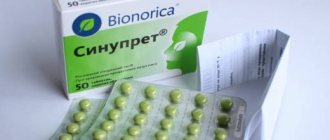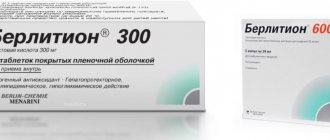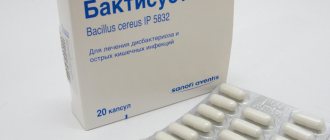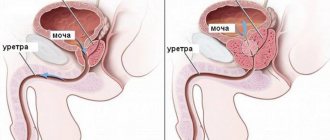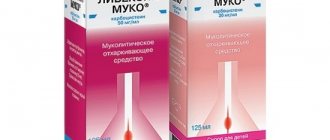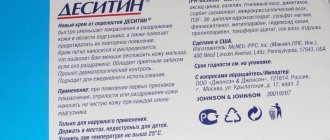Arbidol belongs to the category of antiviral medications. And thanks to the active ingredient of the drug, umifenovir, it also has an immunomodulatory effect on the body.
The conditions for storing the medicine are a dry, well-ventilated room, inaccessible to children with an air temperature of no more than +25 °C.
The shelf life of all forms of medication is 2 years. Available without a prescription.
Composition, release form and packaging of Arbidol
The drug is produced in the form of tablets and capsules; in this form, Arbidol is recommended for the treatment of adults and for children whose age exceeds 12 years.
For children 6–12 years old, Arbidol is available in the form of a powder for suspension. All forms of Arbidol contain one active ingredient - umifenovir, the auxiliary components are somewhat different.
Excipients in the composition of the drug in tablets:
- Calcium stearate;
- Methylcellulose;
- Stearic acid;
- Molivinylpyrrolidone;
- Magnesium carbonate basic;
- Beeswax;
- Sugar;
- Talc;
- Aerosil;
- Potato starch.
Arbidol capsules contain excipients such as:
- Gelatin;
- Titanium dioxide;
- Acetic acid;
- Natural dyes.
Auxiliary components in the suspension:
- Sodium chloride;
- Sucrazole;
- Aerosil;
- Maltodextrin;
- Pregelatinized starch;
- Titanium dioxide;
- Sodium benzonate;
- Sugar;
- Flavors: cherry, banana.
Arbidol is sold in blister packs containing 10, 20, 40 capsules or tablets. The presented dosage of tablets or capsules is 50 or 100 mg. Arbidol tablets can also be purchased in dosages of 100/200 milligrams. The syrup powder is packaged in glass bottles with a volume of 100 ml.
Release forms
According to the instructions for use of Arbidol, it is produced in the following forms.
- Arbidol for children is produced in the form of a suspension, which is a powder consisting of small white granules. The syrup prepared from it looks like a white liquid of uniform consistency with a sweetish taste. Available in 125 ml tinted glass bottles. Measuring spoon included.
- The oblong capsules are covered with a gelatin shell. Inside they have granular powder of white-green color. Depending on the concentration of the main component in the capsule, the color of its shell may differ: capsules with a dosage of 50 mg are yellow, 100 mg are white. 1 blister can contain 5 or 10 capsules. 1-4 blisters can be placed in 1 package.
- The tablets are produced in a round convex shape with a light creamy tint. Depending on the content of umifenovir, 50 mg and 100 mg tablets are produced. 1 blister contains 10 tablets. 1 package can contain 1–4 blisters.
- Another form of the drug is enhanced-action capsules called Arbidol Maximum. They are covered with a white gelatin shell. It contains a white granular powder with shades of yellow and green. 1 capsule contains 200 mg of medication. 1 blister contains 10 capsules. 1 package may contain 1–2 blisters.
pharmachologic effect
The question of whether Arbidol is an antibiotic or not is of interest to many. Despite the fact that the drug has an anti-influenza effect and acts as an immunomodulator, it is not an antibiotic.
Arbidol suppresses influenza viruses type A, B and associated coronavirus - SARS. According to the mechanism of action on the body, the drug is classified as a fusion inhibitor and effectively interacts with the hemagglutinin of the virus, preventing the fusion of cell membranes and the lipid membrane of the virus.
The use of the drug for viral infections is quite effective and helps reduce intoxication, symptoms and significantly shortens the period of the disease. When taking the medicine in recommended doses, as a rule, there is no negative effect on the body.
Arbidol is well compatible with complex therapy in combination with antibiotics. But they are prescribed together in particularly difficult cases, for example, in the treatment of viral diseases accompanied by complications and the development of a bacterial infection (pneumonia, bronchitis, bronchitis, otitis media, etc.).
General description of Arbidol
Arbidol is an antiviral agent, and its clinical effect is achieved due to the presence of carboxylic acid in the chemical formula of methylphenylthiomethyl-dimethylaminomethyl-hydroxybromindole. Such a complex chemical compound is designed to combat influenza A and B viruses, but also effectively suppresses the symptoms of ARVI. Its action is aimed at destroying the cell membranes of pathogenic microorganisms, as a result of which they become incapacitated.
The drug has interferon-inducing, immunomodulatory and antioxidant properties, as well as a unique ability to activate cellular and humoral compounds of immunity and the phagocytic function of macrophages.
In addition, it is important that Arbidol has a systemic effect in a sick body, which is why it spreads imperceptibly throughout the organs and tissues in the shortest possible time. It is quickly absorbed from the gastrointestinal tract, and its maximum concentration is recorded within an hour after use. The decay period occurs over a long period of time and is partially localized in the liver. It is excreted by the kidneys in the urine, and a small part is eliminated in the form of unchanged metabolites.
Arbidol is produced in the form of yellow capsules.
Analogues of Arbidol are Supradin, Milgama, Neurorubin, Flukold, Nerviplex, Andipal-V, Citeal, Ginekit and Cardonat.
Interaction of the drug with the body
The drug has the following mechanism of action:
- After the capsules dissolve in the small intestine, the release of the active substance begins.
- Immediately upon contact of the granules with the epithelium of the gastrointestinal mucosa, humoral cellular immunity is activated.
- Arbidol begins to be absorbed into the blood.
- The formation of T-lymphocytes and macrophages begins. They cleanse virus-infected body cells from viruses.
- During the passage of the drug through hepatocytes, immune protection is formed, making it difficult for the virus to enter the patient’s blood a second time.
Pharmacokinetics
Suction and distribution
After oral administration, it is quickly absorbed from the gastrointestinal tract. Cmax when taking a dose of 50 mg is achieved after 1.2 hours, Cmax when taking a dose of 100 mg is 1.5 hours.
The active substance of the drug Arbidol® is quickly distributed throughout the organs and tissues of the body.
Metabolism and excretion
Metabolized in the liver. T1/2 is 17-21 hours.
About 40% is excreted unchanged, mainly with bile (38.9%) and in small quantities by the kidneys (0.12%). During the first day, 90% of the dose taken is eliminated.
Indications for use of the drug
The drug Arbidol is prescribed by specialists as a prophylactic agent, as well as as a treatment for diseases such as:
- ARVI;
- Flu gr. A and B;
- Bronchitis;
- Pneumonia;
- Severe acute respiratory syndromes caused by complications of bronchitis or pneumonia;
- Recurrent immunodeficiency states;
- Recurrent herpes infection.
Also, the drug Arbidol can be used as a preventive measure to avoid infections during the postoperative period. Arbidol for children is prescribed over the age of three years in combination with other medications for intestinal infections caused by rotavirus.
Instructions for use of Arbidol
The drug should be taken before meals. The frequency and dosage of administration depend on the etiology of the disease. The drug helps both in the treatment and prevention of many diseases.
When in contact with patients, the medicine is taken daily for 9-12 days for prophylactic purposes. The dosage for adult patients is 200 milligrams per day, and for children 6-12 years old it is 50-100 milligrams, from 2 to 6 – 50 milligrams.
During an influenza epidemic or during a seasonal increase in incidence, the drug is prescribed in dosages similar to the previous case, except that the drug is taken for three weeks.
Directions for use in the treatment of influenza, rotavirus infections and colds: Arbidol is taken four times a day for 5 days every 4 hours. The dosage of the drug depends on the age of the patient.
If any complications arise after a five-day course of treatment, taking Arbidol should be continued for 4 weeks, taking it once a week.
The drug can also be prescribed in the postoperative period to prevent the development of infection. In this case, tablets for adults are prescribed in the usual dosage: once a day - 2 days before the operation and on the 2nd and 5th days after it.
Purpose of the drug
Arbidol - indications for use
Arbidol is used for the prevention and treatment of the following diseases:
- Influenza A and B.
- ARVI.
- TORSO.
- Viral infections complicated by bronchitis or pneumonia.
- In the complex treatment of diseases such as chronic bronchitis, pneumonia, herpes in a recurrent form.
- Conditions of recurrent herpes.
- To prevent infection after surgery.
- In order to strengthen weakened immunity.
- In the course of complex treatment of acute viral infections of rotavirus nature (for children over three years of age).
Despite the fact that Arbidol is available from pharmacies without a doctor's prescription, it is not recommended to take it on your own, especially to young children. It is advisable to first consult with your therapist, and also carefully read the instructions for use.
Dosage
Features of the drug for all ages
Arbidol is taken before meals, with a sufficient amount of liquid. You need to drink only clean water, do not use milk, coffee, tea, juices or any other drinks.
A single simultaneous dose of the drug depends on the patient's age and is divided into the following levels:
- 36 – 72 months – 1 unit (50 mg).
- From 6 to 12 years – 1 unit of 100 mg or 2 of 50 mg.
- Over 12 years old – 200 mg. These can be 2 pills containing 100 mg of the drug, or 4 pieces of 50 mg each.
Prescription for the purpose of prevention:
- If it is necessary to communicate with infected people, take the above doses once a day, for a maximum of two weeks.
- During influenza outbreaks, the threat of an epidemic, to prevent complications from bronchitis, pneumonia or relapse of herpes - a similar dosage twice a week for at least 21 days.
- When in contact with SARS patients, everyone from the age of twelve should take 200 mg once every 24 hours for up to two weeks.
- To avoid problems in the postoperative period, the usual dosage corresponding to the patient’s age is prescribed 48 hours before the operation, and then after the second to fifth day after completion of the surgical intervention.
More information about the action of the drug Arbidol can be found in the video.
How to gargle with Chlorhexidine for children and adults
Treatment with Arbidol:
- Uncomplicated influenza and acute respiratory viral infections - for children 3 - 6 years old - 50 mg, for children 6 - 12 years old - 100 mg, for adolescents over 12 years old and adults - 200 mg, taken at intervals of a quarter of a day for 5 days in a row.
- Flus and respiratory infections with complications such as bronchitis or pneumonia - take the drug in the same dosage and in the same regimen, and then for another month at a single dose once a week.
- SARS - over 12 years - daily 200 mg for 10 days.
- For complex treatment - children 3-6 years old - 50 mg, 6-12 years old - 100 mg, 12 years old and older - 200 mg four times a day for a week, then a single dose twice a week for a month.
- For acute viral intestinal infections - at the same dosage for 5 days every 6 hours.
Arbidol most often does not cause any problems with well-being, but in the case of small children or people prone to various allergic reactions, it is worth carefully monitoring their condition in order to identify possible negative manifestations in time.
Contraindications and side effects
Restrictions on use and possible adverse reactions
Having figured out what Arbidol can be used for, you need to find out possible contraindications. There is no huge list of prohibitions regarding this tool; it is allowed to be used even by those people who work with dangerous and complex mechanisms, drive various vehicles, or are engaged in intense mental work.
It extremely rarely causes allergic reactions; no undesirable effects have been observed when taken simultaneously with other medications. Its effect on the mother and fetus during pregnancy, as well as breastfeeding, has not yet been studied and is not thoroughly known.
Existing contraindications to the use of Arbidol:
- Allergic reaction or high sensitivity to the product.
- Child's age is up to 3 years.
The influence of Arbidol on the management of transport and driving mechanisms
The drug does not cause central neurotropic activity, therefore it can be used for preventive and therapeutic purposes in people in professions that require rapid psychomotor reactions and high concentration of attention (including vehicle drivers, operators, etc.).
Side effects
Side effects of the drug manifest themselves in the form of various allergic reactions, which occur quite rarely.
special instructions
The drug can be taken by people of various professions, including those that require high concentration and attention.
Overdose
The manufacturer has not provided information about the body’s reaction to an overdose of Arbidol.
Arbidol for children
Children's Arbidol is available in the form of capsules or tablets, which contain 50 mg of the main substance. The tablets also contain: beeswax, titanium dioxide, talc, magnesium carbonate, polyvinylpyrrolidone, aerosil, sugar, stearic acid, calcium stearate, methylcellulose, potato starch.
Children's arbidol tablets are white and round in shape. Two-color capsules - lemon and white. There are two layers inside the drug tablet. The capsules contain coarse powder.
Arbidol for children is prescribed for the prevention and treatment of inflammation of the bronchi and lungs, ARVI and influenza. The drug is also used for chronic respiratory infections, for the treatment of the herpes virus, and some other viral diseases.
The drug should not be prescribed to children under 2 years of age, as well as to those people who are intolerant to the drug and its components. When treated with this drug, children may experience allergic reactions.
The drug is taken orally before meals. The intervals between doses should be approximately equal.
Arbidol is prescribed for children in the following doses: from 2 to 6 years old, 1 capsule (tablet) is prescribed at a time; age 6-12 years are prescribed 2 capsules (tablets) at a time; 13 years and older - 4 capsules (tablets) of 0.05 mg each. For preventive purposes, the drug is not recommended for use by children under 6 years of age.
Arbidol's analogs
Analogs of a drug mean drugs that contain one active substance, but are produced under different names.
Analogues of the drug Arbidol include the following drugs:
- Engystol;
- Ferrovir;
- Proteflazid;
- Armenicum;
- Detoxopyrol.
Before using any analogue of Arbidol, you should definitely consult a specialist.
Cheap analogues
Cheaper analogs also have a similar antiviral and immunostimulating effect:
- Interferon;
- Ocitovir;
- Isoprinosine.
Arbidol price
The price of one package of the drug depends on the number of capsules/tablets and the dosage of the drug.
The cost of Arbidol is from 160 rubles. and up to a maximum of 900 rubles. Arbidol in powder form, intended for preparing a suspension, costs between 300-400 rubles in different pharmacies.
When treating with this drug, you must follow the recommendations of your doctor, as well as the instructions for use.
Vacation conditions
The drug is sold without a prescription.
Shelf life of the drug
The shelf life of the drug is 2 years.
Storage conditions
Arbidol should be stored at temperatures up to 25°C in a dry place.
During pregnancy
The instructions for use do not provide information on the use of Arbidol while expecting a baby. Therefore, the medicine is not prescribed for preventive purposes during pregnancy.
For therapy at this time, Arbidol can only be prescribed by a medical specialist. Treatment with this drug is not practiced during breastfeeding.

